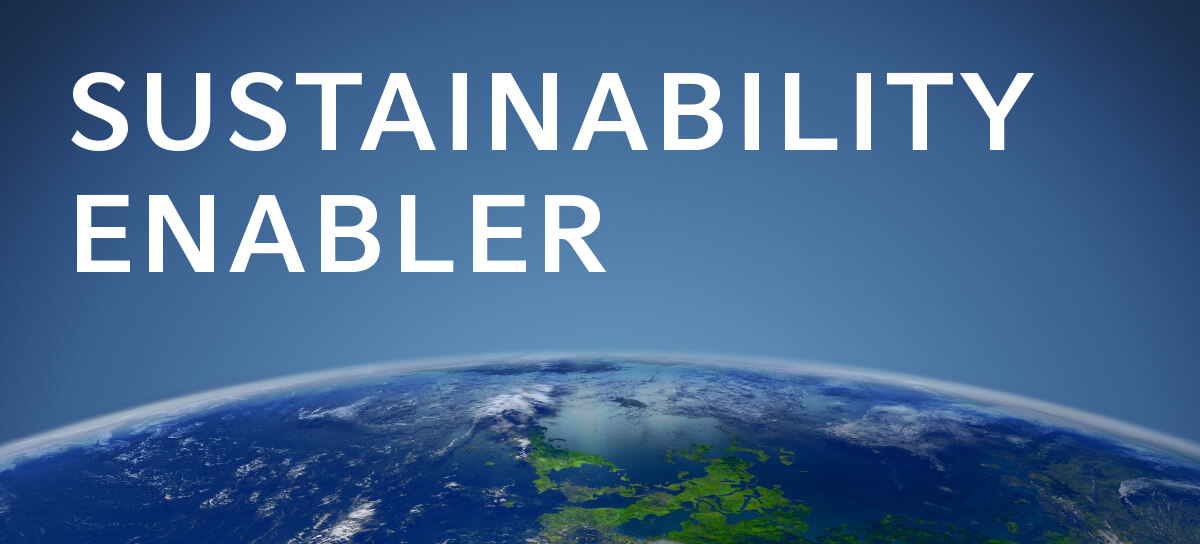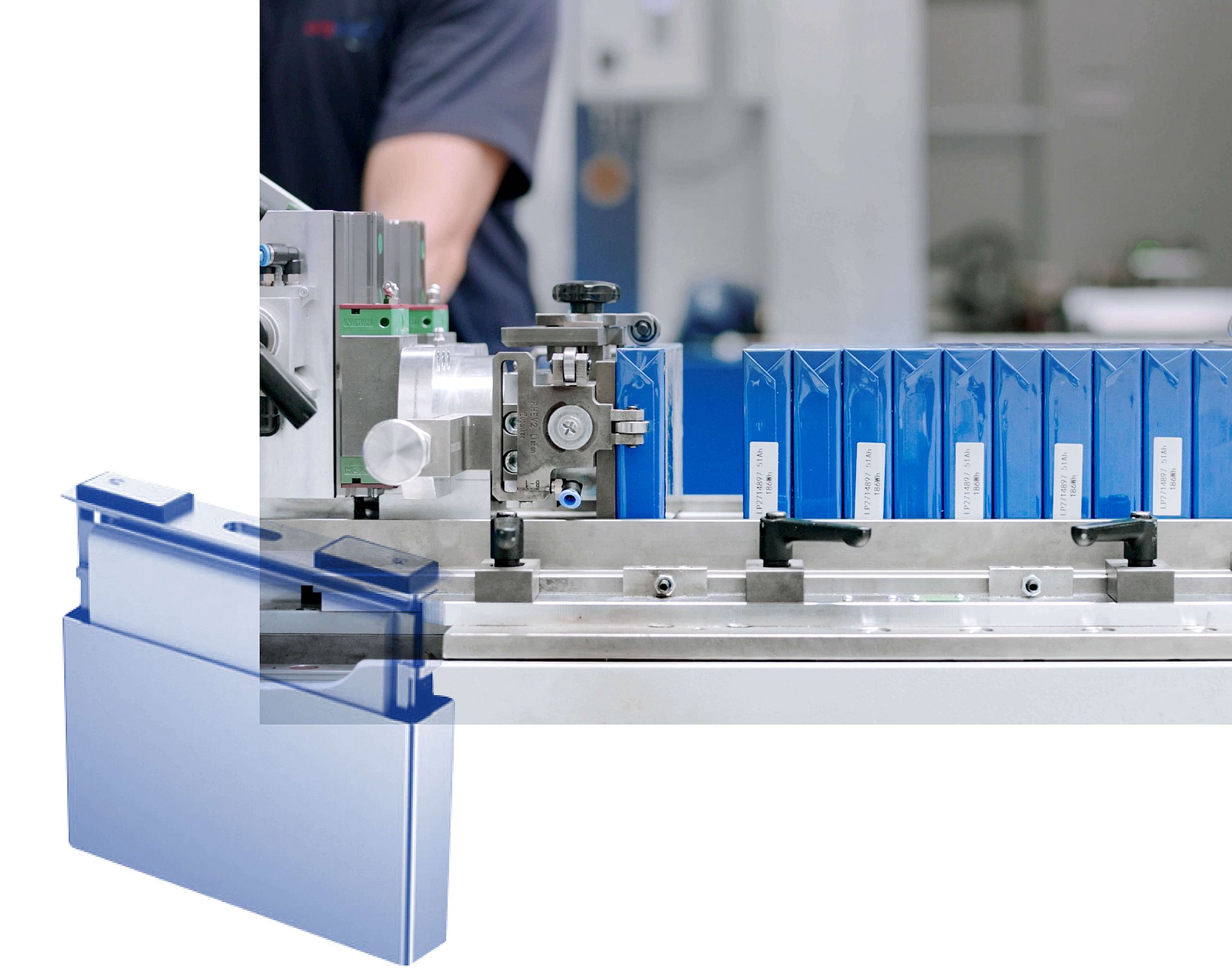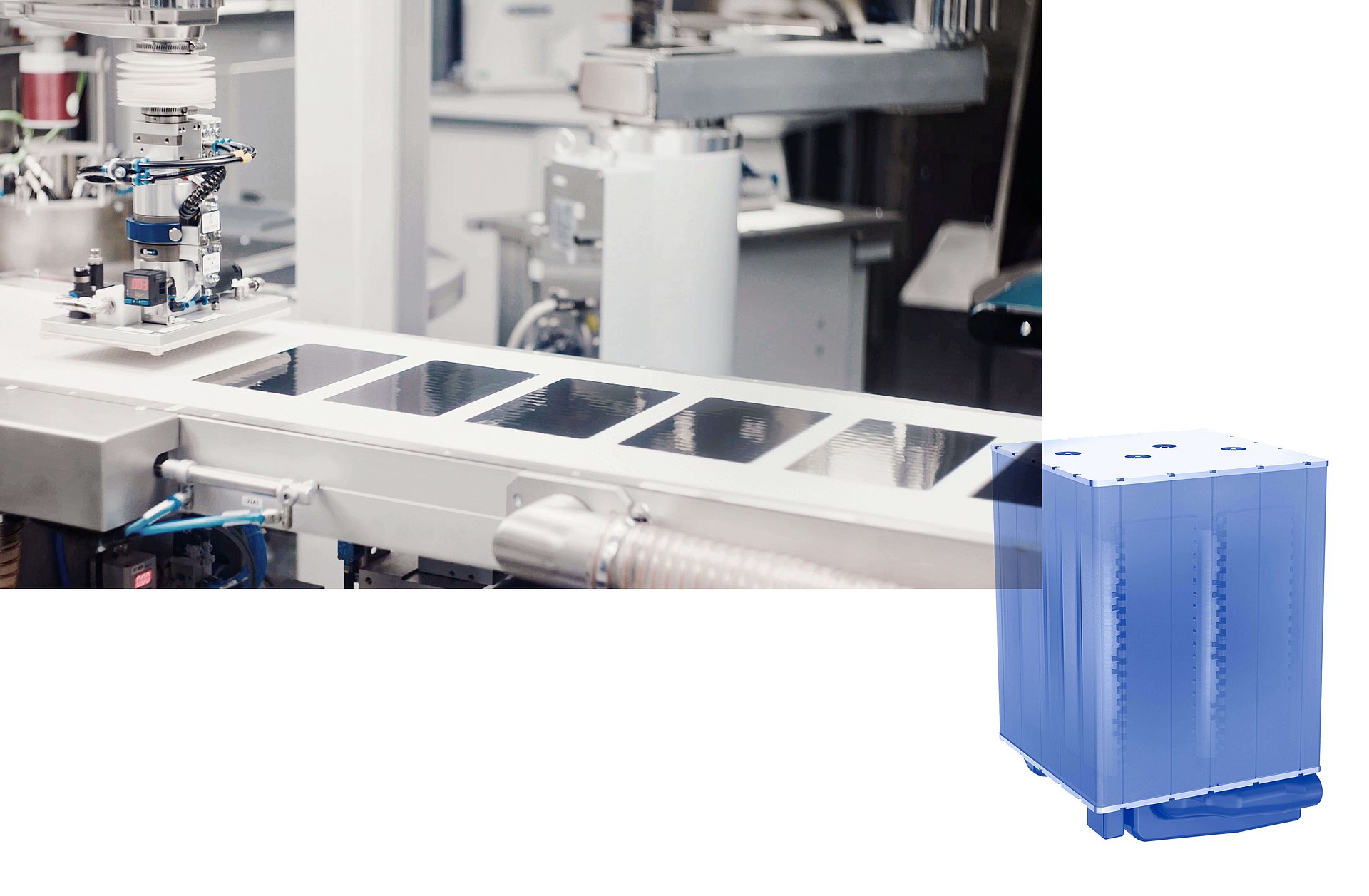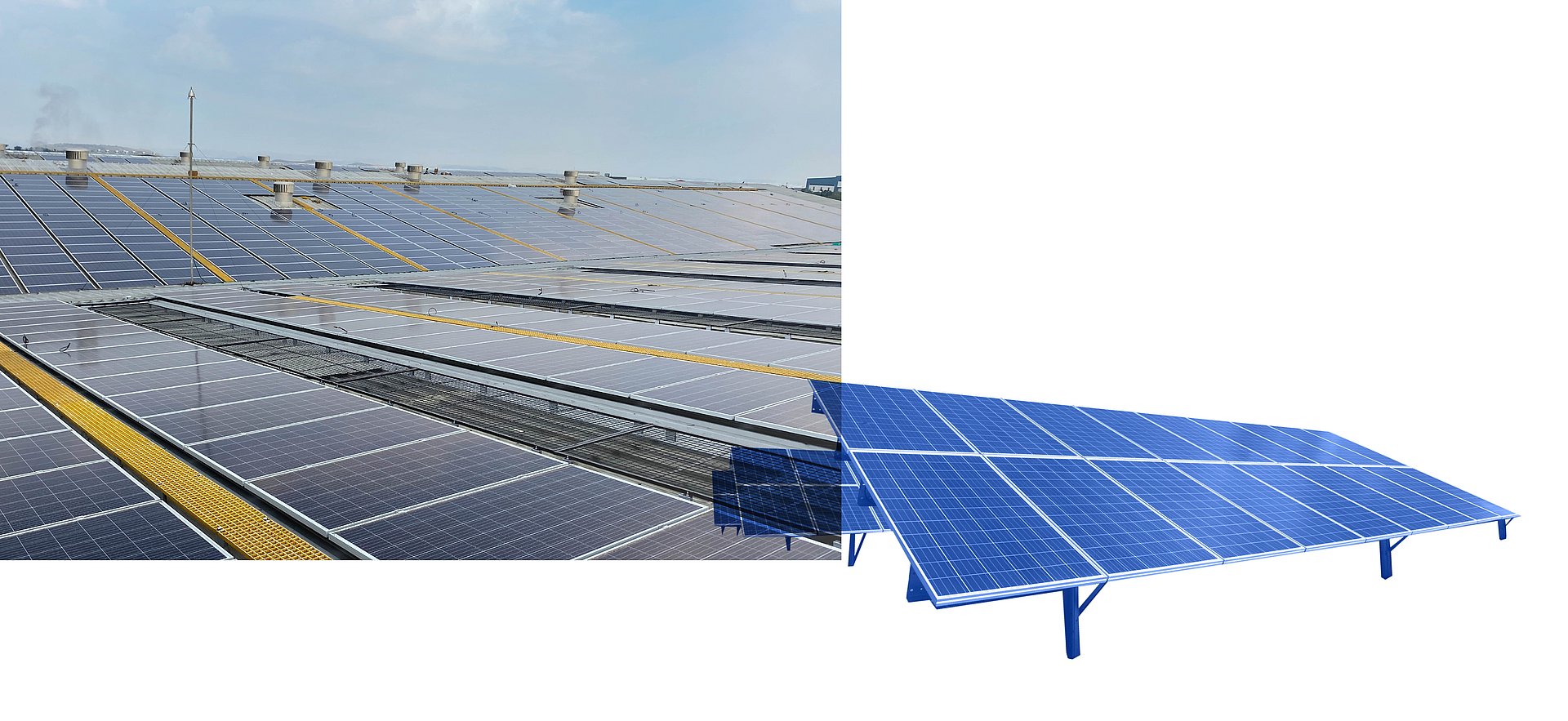
Sustainability Enabler
The biggest and most urgent task facing our society is to limit global heating in order to protect the glaciers and permafrost, prevent extreme weather events, and preserve biodiversity – a mammoth undertaking that will require a concerted effort if it is to succeed. Limiting the global rise in temperature calls for innovations that bring about a direct reduction of the world’s carbon footprint – solutions such as those ElringKlinger is already able to deliver and offer. This is because, as a global company, the Group is actively fulfilling its responsibility toward the environment and society in terms of both its products and its production.
Humanity is heating the Earth up. All parts of the climate system – the oceans, the ice caps, the soil, the atmosphere, and the biosphere – have warmed significantly in recent years. The cause? Industrialization. Although it has brought progress and prosperity, it has also burned huge quantities of fossil fuels and continues to do so. The air on the Earth’s surface is now around 1°C warmer than before the Industrial Revolution. The consequences of rapid global heating are as diverse as they are serious. Forest fires and severe storms are just a few examples of extreme weather events that are posing ever greater challenges. If action is not taken, sea levels will rise by over one meter by 2100 according to the Intergovernmental Panel on Climate Change (IPCC), posing a further threat to millions of people around the world that live at sea level. A one-meter rise in sea levels would make some 15 million people homeless in Bangladesh alone, plus a further 2.5 million or so in the Nile Delta. Climate researchers are in no doubt that any additional warming will require stronger, more costly adaptation measures to keep our Earth in equilibrium. The more rigorously we work to reduce greenhouse gas emissions, therefore, the more we will mitigate the other consequences of climate change.
CO2 emissions, CO2 reduction, and carbon neutrality are terms that have now entered our everyday lexicon, that are shaping the spirit of our times, and that are synonymous with our global responsibility. Yet rather than cutting down, humanity is pumping out more and more carbon dioxide: global CO2 emissions have risen by nearly 60% over the past 30 years. The transport sector accounted for around a fifth of all CO2 emissions in 2020. As a result of globalization and the associated increase in traffic volume, it likewise generated much higher CO2 emissions than in 1990. However, more and more countries are showing signs of reversing this trend. They are setting climate targets and underpinning them with specific measures, serving as role models, and leading by example. This is about climate justice and many small reductions adding together to produce a drastic cut in total emissions – requiring efforts by countries and companies as well as each individual person on the planet.

The mobility transition is a prime example. It shows how innovations can significantly reduce energy consumption and thus emissions in the transport sector without restricting mobility. Electromobility holds the key to climate-friendly mobility in this respect insofar as electric vehicles are run on electricity or hydrogen generated from renewable sources. The carmakers that have announced plans to drop the combustion engine within the foreseeable future already represent 80% of the global market. The variety of electric car models available is increasing exponentially, and the expansion of charging infrastructure is also progressing space.
In other words, the transformation is already well under way in the automotive industry, and ElringKlinger is right in the thick of it. The “it” here is a new world of products where the focus is no longer on a vehicle’s fuel consumption and engine power but rather on its range and charging time. To this end, ElringKlinger took the step of expanding its product portfolio in line with its core areas of expertise at an early stage and has evolved into a leading innovator and pace-setter in several areas following a technology-agnostic approach. Many products are already helping to reduce emissions in mobility or even eliminate them entirely.

800 V
ElringKlinger’s battery systems achieve a total system voltage of up to 800 V.
The modular approach enables the battery modules to be combined in numerous different arrangements in storage systems from 2.2 to 70 kWh.
ZERO EMISSIONS
ElringKlinger’s zero-emission technologies include battery and hydrogen fuel cell technology as well as electric drive units. Battery-powered vehicles are more technologically developed, ready for the mass market, and cheaper to buy. Their hydrogen-powered counterparts, by contrast, are quicker to fill up, achieve longer ranges, and tend to contain much smaller and more lightweight battery packs. In both areas, ElringKlinger has the development and manufacturing expertise necessary to offer modules and components suitable for series production. After all, both technologies have a role to play in making mobility as a whole climate-neutral. On the one hand, battery technology has clearly come out on top for short to medium-length trips in the passenger car segment as refueling time is less of an issue here. On the other hand, the hydrogen fuel cell is proving increasingly popular for long journeys and heavy-duty transport since the vehicles can travel further in relative terms without having to stop for fuel.
ElringKlinger is actively driving carbon-neutral mobility forward – on the roads, off the roads, on the rails, and in the water. The Group considers all the relevant up- and downstream environmental issues at an early stage, while development is still ongoing. This is particularly important in order to prevent the risk of natural and non-renewable resources being exploited.
The ElringKlinger Group’s battery technology operations are growing fast on both the development and production sides. Developers are aiming to increase the acceptance of battery-powered vehicles through technological progress, so the focus in all developments has always been on solutions for the most important purchasing criteria: range and charging speed. And this is why the latest battery concept for a manufacturer of sports cars consists of a pack with over 400 pouch cells that enable a capacity of over 70 kWh. Armed with 800 V technology and a particularly efficient cooling system, a battery capacity of 80% can be reached in as little as five or so minutes when the sports car is being charged. Alongside fast-charging technology inside the electric car, there is also a need for ultra-fast charging stations, and it was precisely with this in mind that ElringKlinger has developed another 800 V battery storage system with its own prismatic modules and readied it for series production. Arranging these batteries in parallel produces a level of capacity and power for autonomous fast-charging stations that the conventional power grid cannot yet guarantee.
Besides the passenger car segment, ElringKlinger is also focusing on off-highway markets for its batteries. The Group believes that there is potential in agricultural and construction machinery, electric boats, and small commercial vehicles. Just like carmakers, the key players in these segments are also facing the challenges of manufacturing climate-friendly products. The modular approach followed by ElringKlinger’s battery modules offers a crucial advantage in this regard as it enables a wide range of applications in different-sized storage systems within a short space of time.

The most powerful stack module can supply energy to trucks as well as ships and trains. It contains 598 cells and has an electrical output of up to 205 kW.
We need both battery and fuel cell technology in order to make mobility as a whole climate-neutral.
Alongside battery technology, the fuel cell is also on the rise – in both passenger and goods transport. Unlike in a battery-powered vehicle, the power inside a fuel cell vehicle is generated in situ, meaning no lengthy interruptions for charging. Once fuel cells are being manufactured in sizable quantities, they will be competitive in terms of their unit price. ElringKlinger thus sees considerable potential with regard to performance, costs, and reliability. In partnership with French automotive company Plastic Omnium, ElringKlinger has been actively – and successfully – driving forward hydrogen-based mobility since 2021 through EKPO Fuel Cell Technologies GmbH, the joint entity set up specifically for this purpose. Its order book is filling up, and its highly efficient manufacturing processes and automated production capacity can already handle up to 10,000 units – fully audited and in proven automotive quality. The product range includes PEM fuel cell modules with stack-type peripheral equipment as well as various stack components such as metallic bipolar plates and end and media modules. Across three different electrical power classes, the stack modules – which are ready for series production – currently cover a range from 76 kW to 205 kW. These are the kind of levels that are needed for passenger cars as well as truck, rail, and marine applications. The modules represent a benchmark in terms of power and performance density and are setting international standards. Interested customers currently include bus, truck, train, and ship manufacturers as well as companies that make off-highway vehicles such as construction machinery and municipal vehicles. This is because these vehicles also need to deliver maximum efficiency and performance if they are to be designed for long-term, multi-shift operation. The Group also entered into a strategic partnership with the aerospace corporation Airbus in 2020 in order to work together on developing and validating fuel cells suitable for use in aviation applications as well over the next few years.
The Group’s pioneering spirit is as strong as ever and has ensured that, through its existing product portfolio, ElringKlinger is already in a position to make an active contribution to protecting the climate. It will also be this spirit that guides the Group successfully into the future – through innovations that overcome technological boundaries and, above all, steer the world toward greater sustainability.

ElringKlinger built a new PV installation at its Indian production site in 2021. Nearly as big as two soccer pitches, it will supply the plant with green electricity from 2022 onward. With a capacity of 1.2 MWp, the PV installation is calculated to generate almost as much electricity as the plant needs in a year.
LESS EMISSIONS
Instead of watching from the sidelines, ElringKlinger is leading by example. This is because the climate plans that many governments have unveiled to date will not be enough to achieve the 1.5 degree target under the Paris Agreement. Together with all its employees, therefore, the Group is rolling up its sleeves and intends to become carbon-neutral in net terms in 2030 and fully climate-neutral by 2045. The journey there will be long and full of challenges waiting to be solved. But it is an investment in the future that will pay off – for the company, for future generations, and for the environment. This is why the Group has produced a clear roadmap, one that leads to climate neutrality.
In a first step, all of ElringKlinger’s German sites will switch to carbon-neutral production as from 2021. This means that all Scope 1 and Scope 2 emissions – i.e., all direct and indirect emissions within the company itself – will be cut significantly in line with the Greenhouse Gas Protocol.1 To this end, all existing electricity supply contracts will be switched to green electricity first of all. Carbon neutrality at all European sites will then follow in 2025, with all sites around the world set to embrace carbon-neutral production by 2030. At the same time, the Group is working to reduce its Scope 3 emissions, i. e., those generated up- and downstream along its entire value chain.
The Group has defined four fields of activity to structure the numerous measures that are being implemented on the road to climate neutrality: (1) increasing energy efficiency; (2) using more renewable energy; (3) switching to green electricity; and (4) offsetting any completely unavoidable CO2 emissions by investing in CO2-reducing projects outside the company.
The wind turbine in Redcar generates approx. 1,400 MWh of green electricity at an average wind speed of 6.1 m/s. This saves some 600 tons of CO2 a year.
4
fields of activity have been identified by the Group on its journey toward carbon neutrality.
![[Translate to English:] Windkraftanlage in Redcar [Translate to English:] Windkraftanlage in Redcar](/fileadmin/_processed_/d/e/csm_elringklinger-pulse-2023-sustainability-enabler-04_carbon_neutrality_2553072174.jpg)

In the first field of activity, the energy efficiency of all the Group’s buildings and facilities is being assessed and optimized. The company’s production sites have been tasked with reducing their CO2 emissions by at least 2.5% a year relative to the baseline year of 2019. This reduction can be achieved by optimizing processes, via replacement investments or through the targeted modernization of buildings. The second field of activity is about building more installations that generate renewable energy wherever this is technically feasible and makes commercial sense. The third field involves switching all electricity supply contracts to electricity generated from environmentally friendly renewable sources. In the fourth field, all unavoidable CO2 emissions are to be offset by investing in targeted projects designed to protect the climate. The Group is expressly committed to keeping these offsetting payments as low as possible, however, because ElringKlinger wants to become climate-neutral through its own efforts.
Alongside these steps, ElringKlinger is also setting aside 1% of its planned investments for energy-saving measures every year. All sites can put their own projects forward for a slice of this budget to compete for the chance of securing funding. The focus will then be on those projects that promise the greatest reduction in CO2 per euro spent as well as on those measures that will achieve significant energy savings.
Achieving climate neutrality is a project on a truly stupendous scale that will occupy and shape the Group for many years to come.
Achieving climate neutrality is a project on a truly stupendous scale that will occupy and shape the Group for many years to come. What makes this project unique is the fact that all staff across the Group are part of it and will drive it forward together, both on the product side and the production side. After all, ElringKlinger can and will only make a positive contribution to protecting the environment and achieve climate neutrality if everyone pulls together. As a “sustainability enabler,” ElringKlinger has its sights set not only on its own footprint but on its customers’ too. This is why the Group already has a transformed product range at its disposal that can unlock emission-free mobility.
1 The Greenhouse Gas Protocol (GHG Protocol) is a globally recognized standard for measuring and managing greenhouse gas emissions. It distinguishes between direct Scope 1 emissions and indirect Scope 2 and Scope 3 emissions.





